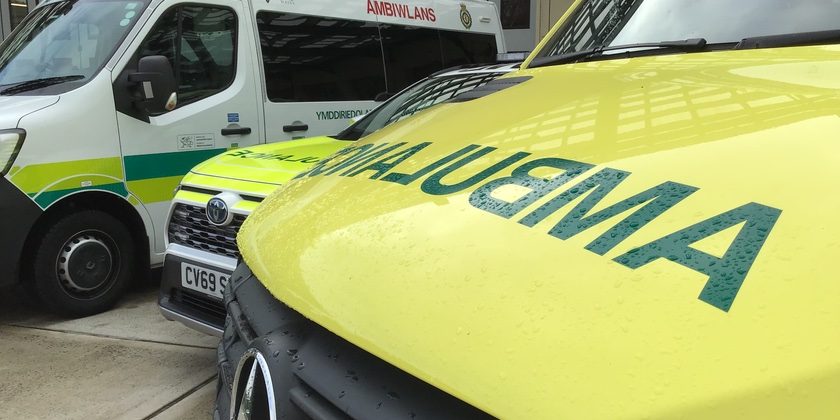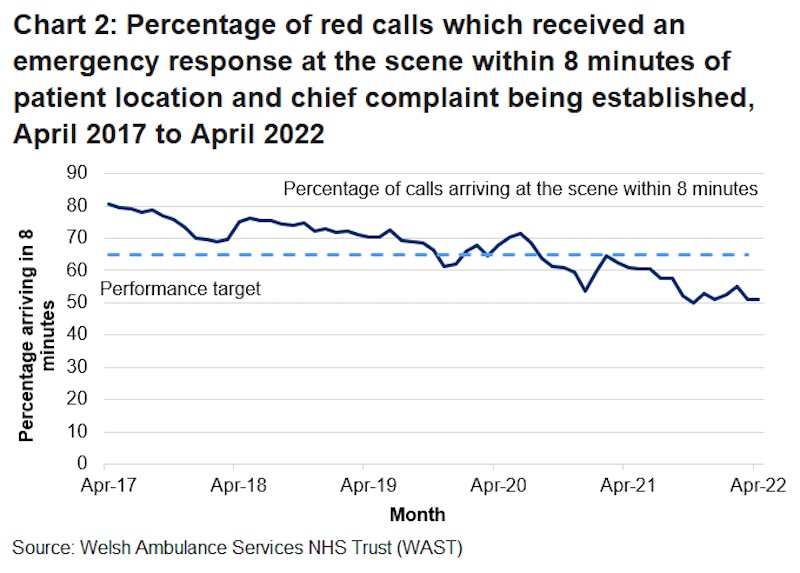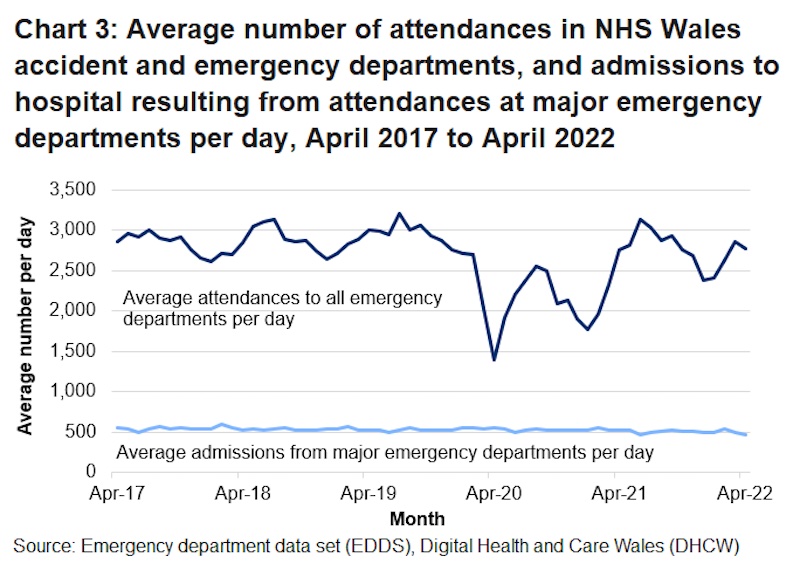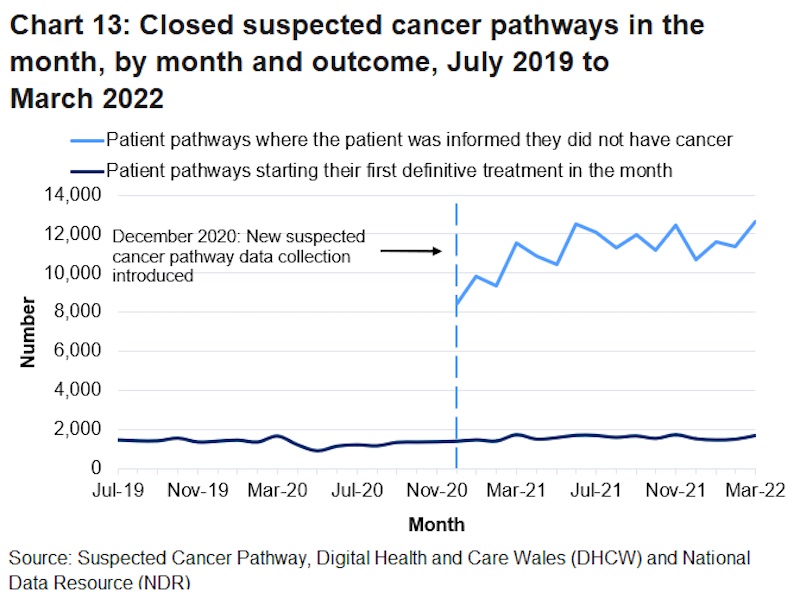Just over 51% of immediately life threatening calls had ambulance response within eight minutes last month

Just over 51 per cent of immediately life-threatening calls received an ambulance response within eight minutes last month.
This is below the 65 per cent target and is 9.8 percentage points lower than in April 2021.
Category red calls are immediately life-threatening and include when someone is in imminent danger of death, such as a cardiac arrest.
The calls should be attended within eight minutes.
However last month just 51.2 per cent of emergency responses were attended within the target time.
The median response time in the four years prior to the pandemic ranged between 4 minutes 30 seconds and 6 minutes for red calls.
In March, the average (median) response time to immediately life-threatening ‘red’ calls was 7 minutes and 49 seconds. This was 1 second faster than March but 1 minute 6 seconds slower than April 2021.
In April, almost 38,000 emergency calls were made to the ambulance service – with 120 immediately life-threatening ‘red’ calls made on a daily basis.

Monthly figures released today by the Welsh Government continue to highlight the demand being faced by Wales’ emergency departments.
In April there were more than 83,000 attendances to all NHS Wales emergency departments – an average of 2,770 emergency department attendances per day; 94 fewer attendances per day on average than in the previous month.
Across Wales 65.9 per cent of people were seen within the four hour target time.
However Betsi Cadwaladr health board was the worst performing area, seeing only 56 per cent in four hours.
At the Wrexham Maelor Hospital the number of people seen with the target time frame dropped last month to 39.7 per cent.
58.4 per cent were seen locally within eight hours and 73.5 per cent within 12 hours.
Ysbyty Glan Clwyd was the worst performing emergency department across Wales last month with just 34.7 per of attendees seen within four hours.
Yesterday it was announced that the hospital was designated a ‘Service Requiring Significant Improvement’ by Healthcare Inspectorate Wales (HIW).
The designation is based on an accumulation of evidence, originating in January 2022, leading to the completion of a Quality Check on 8 March 2022 and an unannounced onsite inspection that took place on 3-5 May 2022.
Several patient safety concerns were identified during this period.

The number of people waiting to start treatment in Wales has also reached record levels, increasing to 700,000 in March.
This is the first time that such a figure has been reached as the NHS continues to face demand from the covid-19 backlog and a growing demand from people who’s health has worsened during the pandemic.
The percentage of the total patient pathways that were waiting less than 26 weeks increased on the previous month whilst the number of pathways waiting longer than 36 weeks increased to the highest number on record.
The average (median) time patient pathways had been waiting for treatment at the end of March remained high but decreased on the previous month to 22.5 weeks.
In North Wales there are 156,245 patients waiting to start treatment.
For the first time the Welsh Government has also released details of the number of calls made to the 111 service.
Of those 81,459 have been waiting up to 26 weeks, 14,921 between 26 and 36 weeks and 59,865 over 36 weeks.
Last month almost 86,000 calls were made to the service – was an average of 2,863 calls per day. Of the total number of calls made, 73,000 were answered and 13,000 were abandoned by the caller.

Today’s figures have been condemned by politicians, who have also called for urgent action to be taken by the Welsh Government.
Welsh Conservative and Shadow Health Minister Russell George MS said: “Last week, the Labour Government released its plans to spend millions of taxpayer money on more politicians for Cardiff Bay. Labour is so self-absorbed that they prioritise shoring up their own fiefdoms before fixing the NHS and ensuring the hundreds of thousands of people languishing in pain on an NHS waiting list are treated promptly, people who put healthcare before the constitution.
“After reading another month of devastating news on NHS performance – where the treatment list exploded by 10,000 in one month – no one will think this is a wise use of governmental time. All the while, the Health Minister reneges on her promise to make NHS leadership more independent of her ineffectual government.
“Let there be no doubt of the scale of the crisis the NHS finds itself in while Labour spend time and energy pursing objectives totally opposite to the people’s priorities. Mark Drakeford is Nero fiddling as Rome burned. Labour need to get a grip on the NHS and stop breaking all the wrong records.”
The Welsh Liberal Democrats are calling on the Welsh Government to address waiting times for primary care services to relieve the pressure on A&E.
Commenting Jane Dodds MS said: “This simply cannot go on. Our NHS staff and ambulance are doing everything they can, but people’s lives are at risk when ambulance response times are so poor.
“Week after week I hear stories of people waiting hours for an ambulance, hours for treatment in A&E and even being treated in the back of ambulances sat outside our hospitals.
“The Welsh Labour Government is failing time and again to address the crisis in our NHS.”

A Welsh Government spokesperson said: “The Planned Care Recovery Plan published last month set out a series of ambitions. The first ambition was to reduce the number of open pathways waiting over 52 weeks for a first outpatient appointment to zero by the end of 2022.
In In March 2022, the number of pathways waiting over 52 weeks for the first outpatient appointment decreased by 1 per cent compared to February.
“In March 2022, the number of pathways waiting over 52 weeks decreased by 4.8 per cent compared to March 2021.
“Despite the percentage of patient pathways waiting more than 36 weeks increasing in March, the average time waiting for treatment fell and the proportion waiting less than 26 weeks increased.”
“999 emergency ambulance and emergency department staff and services remain under considerable pressure and performance is not where we want it to be. Our Six Goals for urgent and emergency care programme has been launched to support improvements in outcomes and experience by helping staff to deliver the right care, in the right place, first time whenever possible.
“There was a decrease in average daily attendances to emergency departments in April, and a slight improvement in performance against the targets. The number of life threatening ‘red’ calls remains high, increasing by 36 per cent when compared to the same month in 2021. There is a live national delivery plan in place to support continuous improvement, including in support of tackling ambulance patient handover delays.
“It is important to note that during March nearly 400,000 patient consultations were seen by the NHS in Wales for emergency or elective treatment.”
Spotted something? Got a story? Email [email protected]












